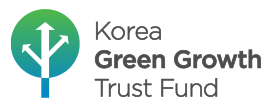Three Innovations of Subway Line 9: Financing, Speed Competitiveness and Social Equity
Three Innovations of Subway Line 9: Financing, Speed Competitiveness and Social Equity
Seoul Subway Line 9 is a route that connects the southern part of the Han River from the east to west. The first (Phase 1) section, completed in 2009, stretches 25.5km and connects Gangnam and Gangseo, Seoul by being operated from Gimpo Airport to Banpo through Yeoui-do. The second (Phase 2) section of Eeonju, Seonjeongneung, Samsung Jungang, Bongeunsa and Sports Complex stations were additionally opened in March 2015. Subway Line 9 is connected to most of the lines in the city (except for Subway Lines 6 and 8), and it is the only line in Seoul that operates an express line in the entire system.
It was constructed through private investment for the first time in Korea as an urban rail transit and promoted by a public-private partnership (PPP) project in the Build-Transfer-Operate (BTO) that transfers the ownership of the facilities to the Seoul metropolitan government after the completion and allows private investors to gain benefits from investment for 30 years of operation in accordance with the agreement with the Seoul Metropolitan Government.
- Reduce the regional disparities of accessibility to Seoul by connecting the neglected areas in services even after the second subway construction
- Mitigate traffic congestion due to the sharp rise in the number of automobiles by increasing the subway transport share to 75%
Seoul Metropolitan Government (SMG)
Seoul Subway, which started with a full-scale economic development plan in the 1960s, took the form of a public transportation network in the early 1990s through the first subway construction of lines 1, 2, 3, and 4 and the second subway construction of lines 5-8; its transport share reached about 32%. However, with the continuous population growth and increase in demand for subway use in a positive way, there were discussions regarding a third subway construction of lines 9-12 as well as the extension of the existing subway line 3 in accordance with the city’s policy to make the subway a central means of urban transportation that would account for more than 75% of Seoul’s traffic volume, followed by the Basic Plan for Seoul Subway in November 1993.
However, the subway is an expensive infrastructure that requires the highest costs (as it has the highest transport capacity) among all public transportation systems. Therefore, the subway construction policy has a lot of controversies in terms of politics, economy and society and is mostly affected by the surrounding situations and circumstances. The third Seoul Metropolitan Subway plan, which included the construction of subway line 9, was in an international context of the Asian financial crisis in terms of economy and faced with a critical situation of a reduction in finance due to the Korean financial crisis (1997-2001) - known locally as the ‘IMF crisis’. This financial situation brought about a lot of changes in the overall plan, along with the inauguration of a new mayor in 1998.
Seoul Subway Line 9
| Attachment | Size |
|---|---|
| SMG-04_ThreeInnovationsofSubwayLine9.pdf | 646.88 KB |


